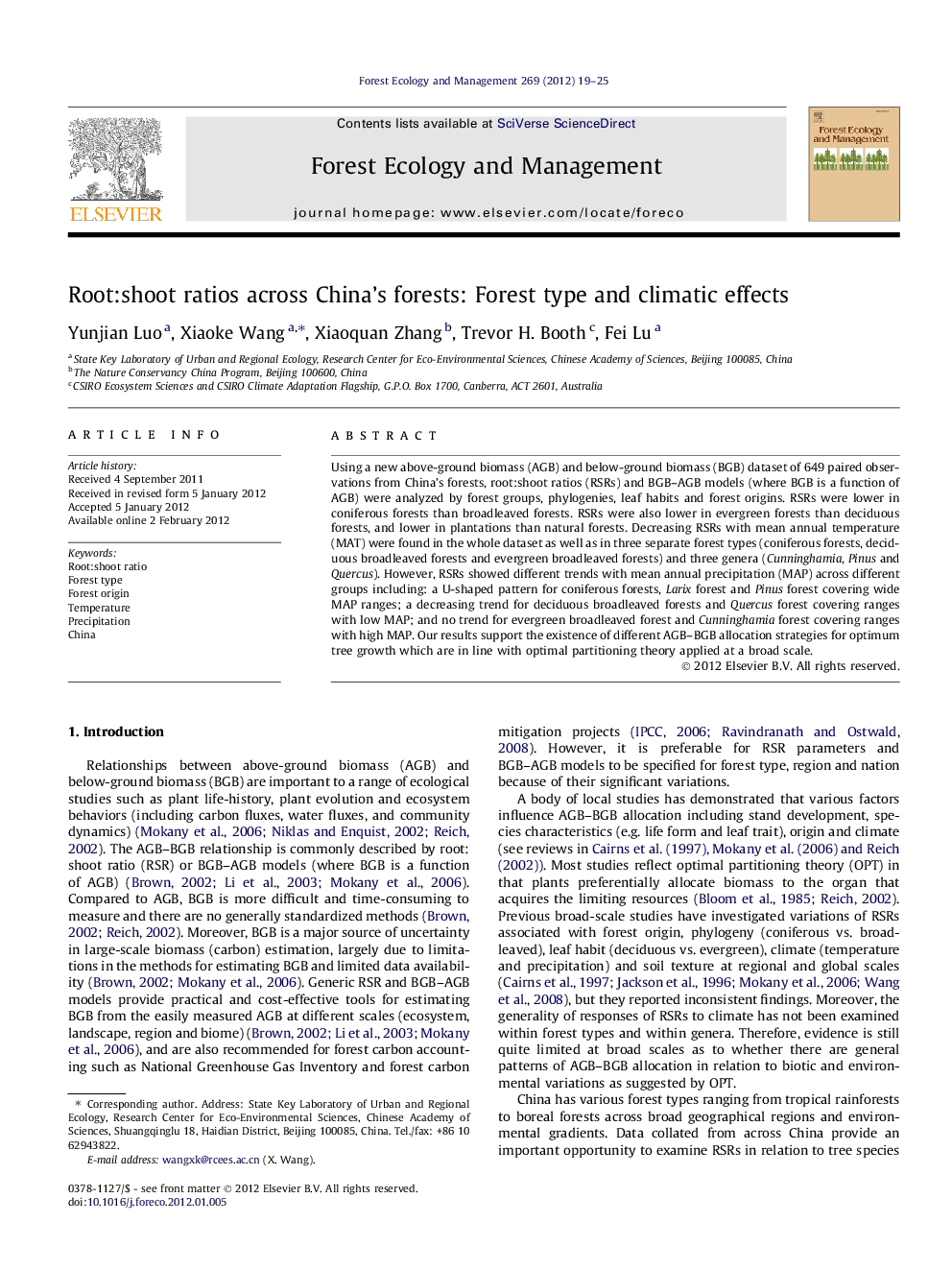| Article ID | Journal | Published Year | Pages | File Type |
|---|---|---|---|---|
| 87437 | Forest Ecology and Management | 2012 | 7 Pages |
Using a new above-ground biomass (AGB) and below-ground biomass (BGB) dataset of 649 paired observations from China’s forests, root:shoot ratios (RSRs) and BGB–AGB models (where BGB is a function of AGB) were analyzed by forest groups, phylogenies, leaf habits and forest origins. RSRs were lower in coniferous forests than broadleaved forests. RSRs were also lower in evergreen forests than deciduous forests, and lower in plantations than natural forests. Decreasing RSRs with mean annual temperature (MAT) were found in the whole dataset as well as in three separate forest types (coniferous forests, deciduous broadleaved forests and evergreen broadleaved forests) and three genera (Cunninghamia, Pinus and Quercus). However, RSRs showed different trends with mean annual precipitation (MAP) across different groups including: a U-shaped pattern for coniferous forests, Larix forest and Pinus forest covering wide MAP ranges; a decreasing trend for deciduous broadleaved forests and Quercus forest covering ranges with low MAP; and no trend for evergreen broadleaved forest and Cunninghamia forest covering ranges with high MAP. Our results support the existence of different AGB–BGB allocation strategies for optimum tree growth which are in line with optimal partitioning theory applied at a broad scale.
► There are significant differences in root:shoot ratios among forest groups in China. ► Lower root:shoot ratios in coniferous forests than broadleaved forests. ► Lower root:shoot ratios in evergreen forests than deciduous forests. ► Lower root:shoot ratios in plantations than natural forests. ► Different relationship patterns of root:shoot ratios with precipitation were found.
